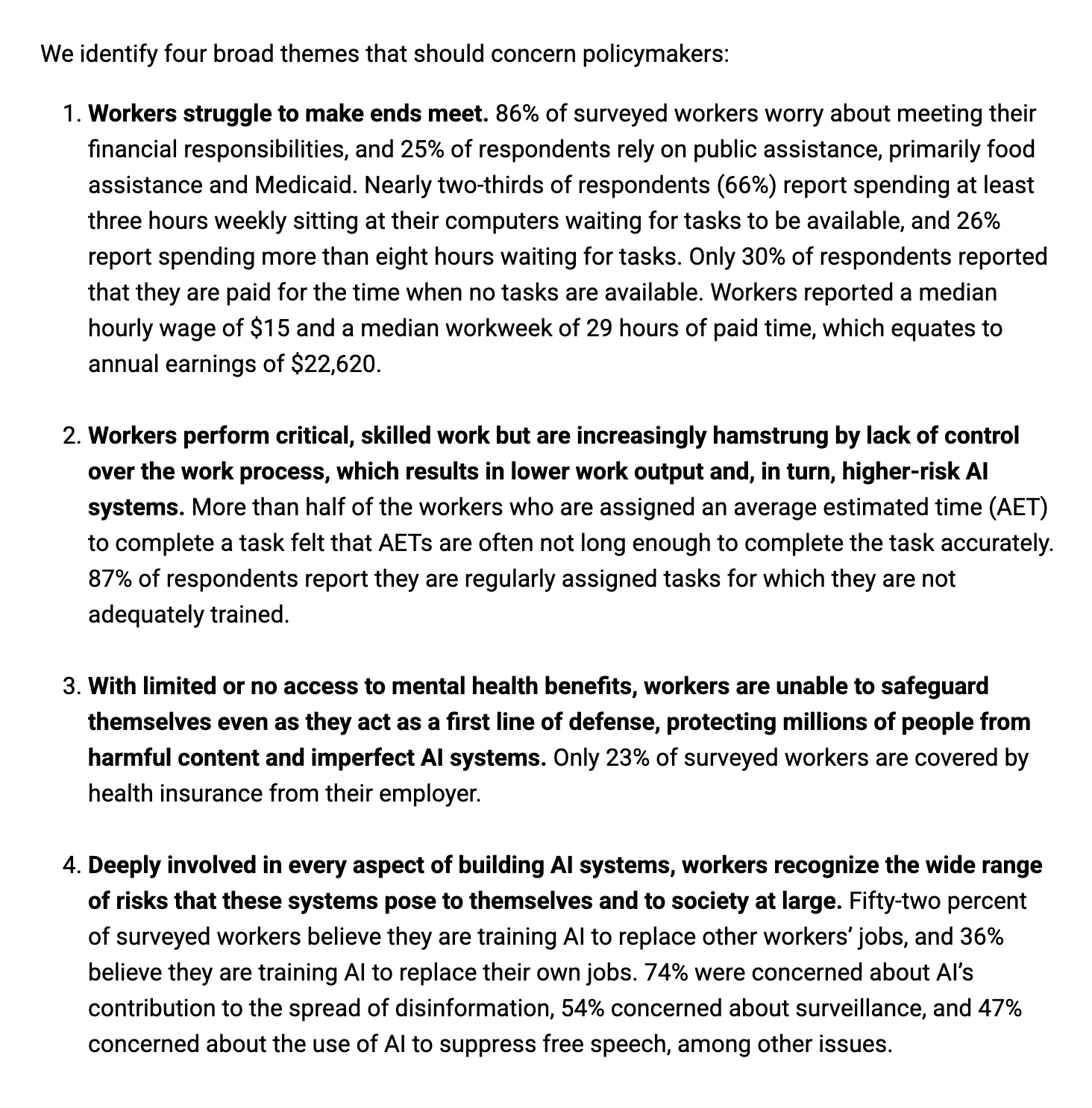A podcast discussion with the AI Now Institute's Sarah Myers West, Data and Society's Maia Woluchem, and Athena for All's Ryan Gerety.
Activity tagged "tech industry"
In six months, the Trump administration has already withdrawn or halted enforcement actions against 165 corporations of all types – and one in four of the corporations benefiting from halted or dropped enforcement is from the technology sector, which has spent $1.2 billion on political influence during and since the 2024 elections.
From lending to payments to stock trading to crypto, prominent fintech businesses have found a competitive edge not in technology itself, but in using narratives about technology as a smokescreen for the profitable arbitrage of financial regulations. This modus operandi is encouraged by Silicon Valley’s venture capitalists, who decide which businesses to fund and often provide advice, gin up hype, and lobby for the businesses they’ve chosen. Our society continues to shower VCs with public subsidies, but as I argue in this brief post, if regulatory arbitrage is what we’re getting from Silicon Valley’s VCs in exchange, it’s well past time to reconsider this relationship.
What I’m most certain of is that we have choices about what our future should look like, and how we choose to use machines to build it. Don’t let inevitabilism frame the argument and take away your choice. Think about the future you want, and fight for it.
This model of media capture has since become a case study in soft authoritarian control. Its blueprint rests on four pillars: the takeover of public media, the political capture of the media regulator, the deployment of state funds as leverage over editorial content, and the strategic acquisition of private outlets. This formula has been successfully exported—with variations—to other countries. ... Efforts to manipulate the media are nothing new; history is littered with regimes that sought to bend the press to their will. What distinguishes this modern form of capture, however, is the role of the private sector. Corporations reliant on government contracts or regulatory leniency buckled under pressure, buying up media outlets and turning them into mouthpieces of state propaganda. In the digital age, media capture is often coupled with digital authoritarianism, where governments and non-state actors collaborate to use technologies to conduct surveillance, restrict access to information, and distort the journalistic ecosystem with authoritarian-friendly outlets and campaigns of disinformation.
The AI bubble popping will not be one single event, but a succession of smaller ones, and I believe this situation is one of them.
When techies describe their experience of AI, it sometimes sounds like they're describing two completely different realities – and that's because they are. For workers with power and control, automation turns them into centaurs, who get to use AI tools to improve their work-lives. For workers whose power is waning, AI is a tool for reverse-centaurism, an electronic whip that pushes them to work at superhuman speeds. And when they fail, these workers become "moral crumple zones," absorbing the blame for the defective products their bosses pushed out in order to goose profits. As ever, what a technology does pales in comparison to who it does it for and who it does it to.
"Say I tell you that you have my permission to move a book I wrote (and am thus the copyright holder for) from your Kindle to another device. If the Kindle book has DRM, you're still not allowed to move it. The fact that I am the copyright holder has no impact on whether Amazon—a company that didn't create or invest in my book—can prevent you from moving that book outside of its walled garden...In fact, if I supply you with a tool to remove DRM (like some versions of Calibre), then I commit a felony and Amazon can have me sent to prison for five years for giving you a tool to move my book from the Kindle app to a rival app like Kobo," [Cory Doctorow] wrote.

